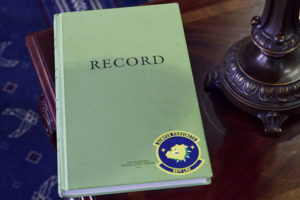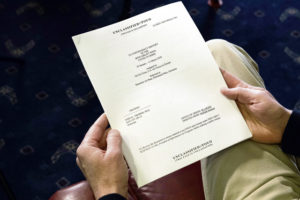
History provides lessons: accounts of what was inform what is, and what could be. U.S. Air Force historians ensure these lessons are available by keeping records of events, submitted them to commanders for sign-off, and organizing the information for future reference.
Under normal circumstances, base historians write an annual history report, but the impact of coronavirus disease 2019 has been so profound that Dr. John Treiber, 86th Airlift Wing historian, has been continuously documenting the events surrounding the pandemic.
“There’s so much going on that I’ve moved to doing weekly history reports,” Treiber said. “At this point, it’s basically a daily chronology.”
While information for reports are typically supported by the gathering of historical documents and personnel interviews, COVID-19 has changed the way historians are collecting data.
“One of the interesting things that has come out of this contingency for the wing, and I suspect it’s this way across the Air Force, is the move to teleworking and using online technologies,” Treiber said. “It’s proven to be invaluable.”
In order to practice physical distancing, personnel have been attending online meetings from their separate offices on base. This venue has proven to be more useful, in some cases, than traditional settings.

“A big part of the Air Force historian’s job is to gather documents,” Treiber said. “Well if they’re posting documents about whatever event, whatever the issue is, I can just grab them. It’s proven to be very interesting from an operational perspective, certainly from a history office’s perspective, because it allows you to rather easily, if not participate, at least sit in on things that maybe otherwise would’ve been difficult to do in the past.”
The move from an annual history report to a weekly report has been necessary to capture all of the operational events surrounding COVID-19.
“So far I have done seven of these weekly history (reports), and this event looks like it’s going to be going on for at least a bit longer, so I’ll continue to do something like a weekly or a bi-weekly chronology,” Treiber said. “When it’s all said and done, when the dust settles and everything’s back to normal, I’ll try to compile all these together, and we’ll have essentially a full history of the 86th Airlift Wing’s involvement in the COVID-19 operations.”

It’s not just operations that need to be captured, however, but the atmosphere and feeling of the pandemic as well, Treiber said.
“What I want to capture in this history isn’t just events,” Treiber said. “Another thing I’d like to make sure is in the report is information that reminds people or lets us know what it was that we were going through on a daily basis that’s not necessarily operational. The feeling of the event is certainly something that I want to try to get into the history report because there’s more to what we’re going through right now than just COVID-19 operations. I’m hoping that by bringing in some of these sorts of elements, they help round out what it is we’ve gone through at this time.”

Historical reports can help commanders and other leaders make important decisions in the near and distant future. They document what worked, what didn’t work, and what was learned, increasing readiness and strategic contingency response for future missions.
“Obviously Ramstein plays a very important role, due to its location as an entry point into the U.S. Central Command area of responsibility and Africa,” Treiber said. “The wing itself has been doing great things for this operation at all levels of leadership, from General August on down, and our medical group, as well. My role is to try to capture at least some of this, whether it’s the daily events or the atmosphere, and hopefully, in the end, we’ll have an account that when people pull these (reports) out and look through them to try to understand what it was the wing went through, what it accomplished — all of that will be in these reports.”


